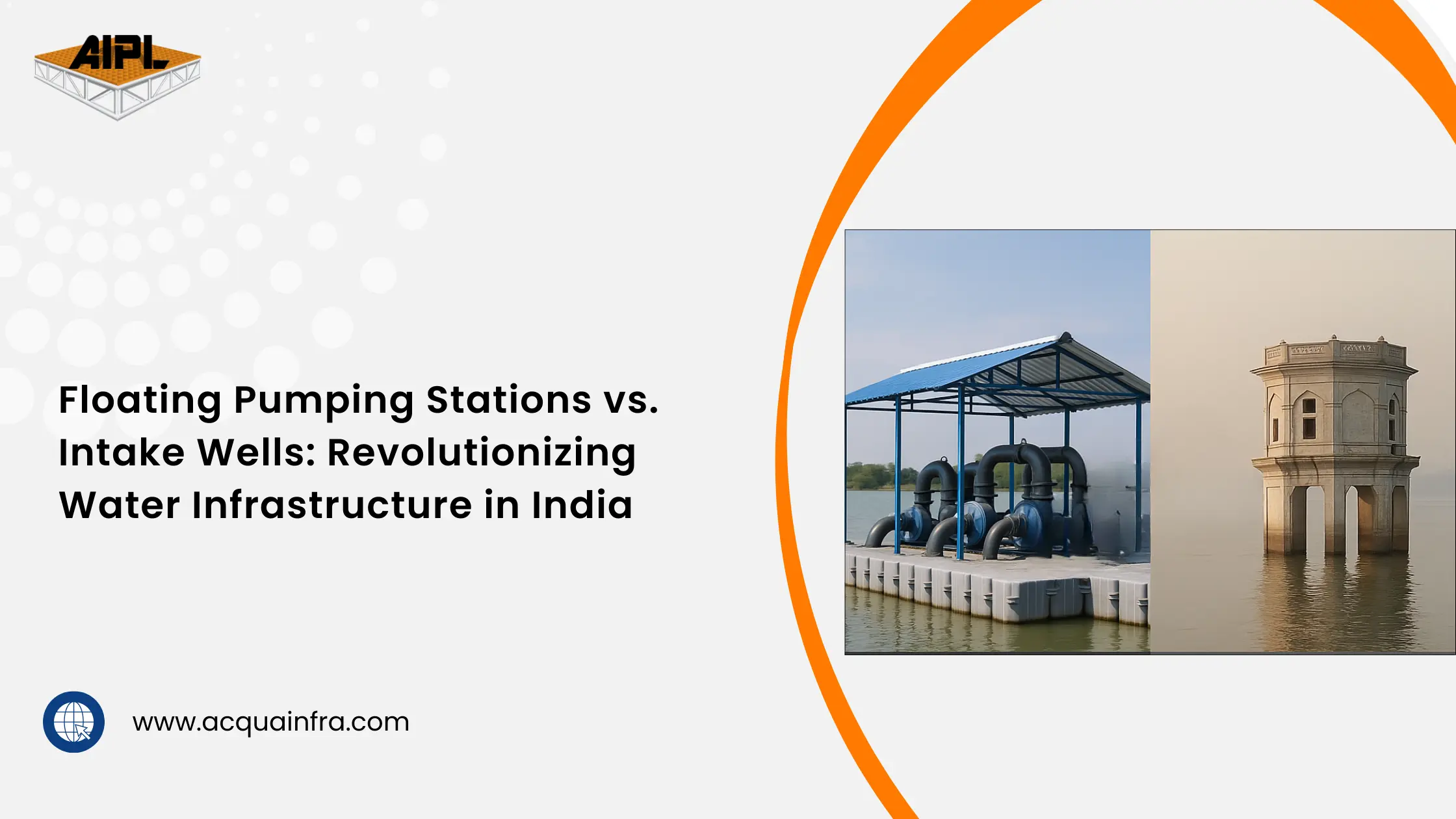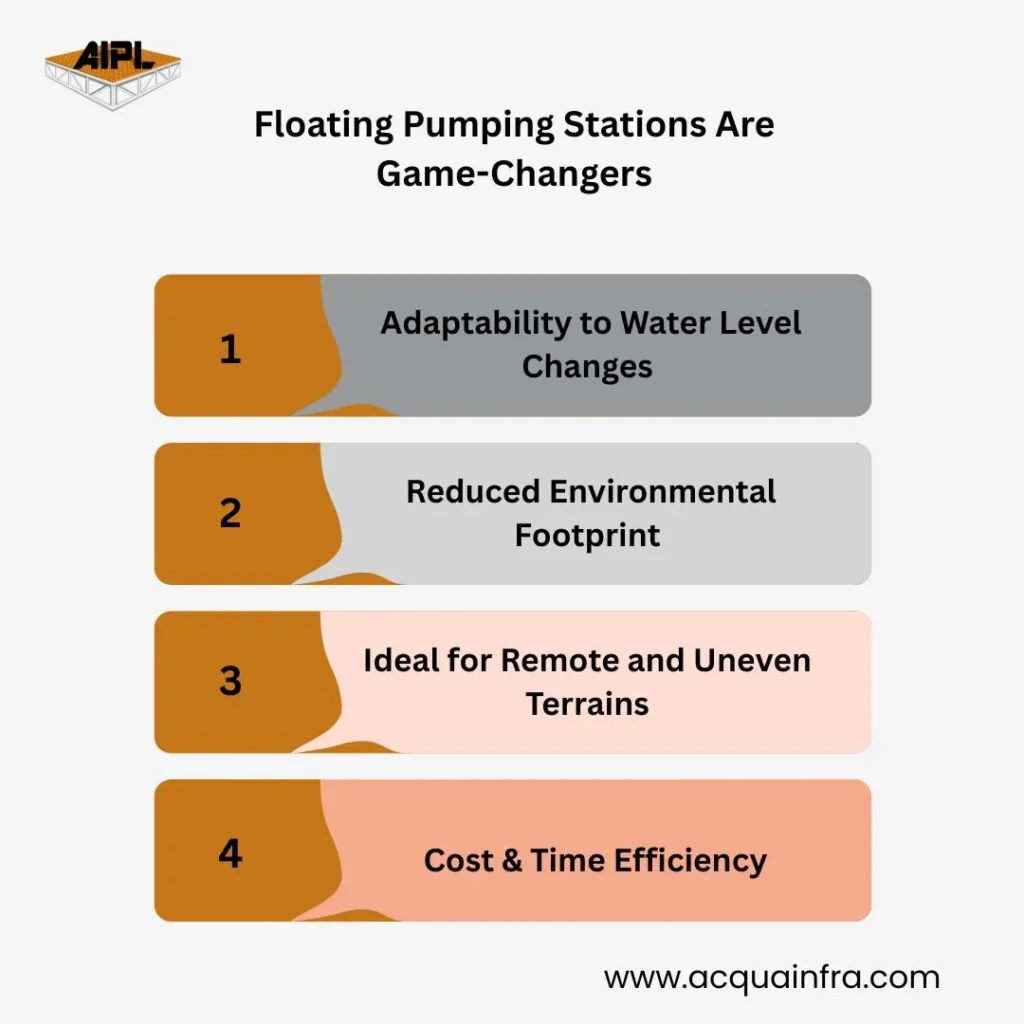
In a place like India in which water is plentiful and in short supply based on climate and geography, having a strong infrastructure for water is vital. The traditional intake wells served as extraction of water, however as the terrain changes and water levels as well as accessibility, floating pumping stations are gaining popularity as an efficient and flexible solution. This blog focuses on the differentiators between the advantages, benefits, and transformational capabilities in floating pumping stations as compared to conventional intake wells and in particular an environment of rising demand for water.
Intake wells are a fixed structure that are built on the banks of reservoirs or rivers to draw water by pumps or gravity. Although historically stable, intake wells have to face issues like
Floating pumping stations, usually installed upon floating pontoons that are modular, are mobile platforms equipped with pumps that sit right on top of the body. They move according to the water level, which ensures constant access to the source of water.
They're typically equipped with:
| Feature | Intake Wells | Floating Pumping Stations |
| Installation Cost | High | Moderate |
| Flexibility | Rigid | Highly versatile |
| Maintenance | Labor-intensive | Easier & cost-effective |
| Water Level Adaptation | Poor | Excellent |
| Remote Area Access | Limited | Great for remote sites |
| Seasonal Movement | Unrealistic | Reposition easily |

1. Adaptability to Water Level Changes
As opposed to intake wells, floating pumps remain in place regardless of the fluctuations in water. This allows for uninterrupted operation in floods or drought.
Floating pump pontoons reduce environmental impact by minimizing land use and avoiding major civil construction near water bodies.
In areas that are marshy or hilly the construction of intake wells is virtually impossible. Floating pontoons are a solution efficiently.
The stations are prefabricated and modular making construction much faster and requiring less capital investment.
AcquaInfra Projects Pvt. Ltd. (AIPL) is a specialist in constructing and delivering custom floating pumping stations, which include:
With AIPL water access, it becomes efficient, scalable and intelligent.
Need a Smart Water Supply Solution?
Get in touch with AquaInfra Projects Pvt. Ltd. (AIPL) today to explore how our Floating Pumping Stations can revolutionize your project.
A Floating Pump Pontoon is a modular floating platform designed to support pumps and associated equipment on water bodies. It provides stable, safe, and accessible infrastructure for water pumping applications in rivers, reservoirs, lakes, and industrial water sources.
Floating Pump Pontoons eliminate the need for heavy civil construction and land acquisition, which often delay projects and harm the environment. They ensure uninterrupted water access even during summer low levels or flood peaks, where fixed pump houses fail. Their modular and mobile nature provides flexibility for relocation or capacity expansion, while reducing downtime, accelerating project timelines, and cutting both capital and maintenance costs.
Urban & Rural Water Supply Projects, Irrigation Systems, Industrial Cooling Water Supply, Mining & Dredging Operations, Power Plant Intake Systems, Flood Management & Disaster Relief.
Public Health Engineering Departments, Power & Energy Utilities, Irrigation & Agriculture, Oil & Gas / Petrochemicals, Mining & Heavy Industry.
Steel (certified) is the primary material for structural components. Other components combine with HDPE or composite elements for buoyancy/support depending on load and site conditions.
Pumps are mounted on vibration-resistant skids with integrated piping, flexible couplings, and access platforms. The pontoons are engineered to handle static and dynamic loads.
The pontoon system rises and falls with water levels, ensuring uninterrupted pump operation and maintaining constant suction conditions.
Yes. The modular design allows pontoons to be transported in parts by road and assembled at the project site, making them ideal for remote and logistically challenging environments.
Small systems (up to 500 m³/hr): 2–3 months; Medium systems (500–2000 m³/hr): 3–6 months; Large systems (2000+ m³/hr): 6–9 months.
Bathymetric & Topographic Survey Data, Seasonal Water Level Variation Data, Pump Capacity & Type, Load & Utility Requirements, Site Accessibility & Deployment Constraints.
Yes. They are designed with redundancy in buoyancy, anchoring systems, and stability margins to withstand wind, waves, and current loads. Compliance with Indian Standards is ensured.
Anchoring solutions include mooring chains, piles, and deadweight anchors depending on depth, current, and soil strata.
Regular inspection of pontoons, coatings, anchoring systems, pump alignment, and preventive maintenance of pipelines and valves.
Yes. AMC covers structural inspections, preventive maintenance, and on-call support to ensure continuous and safe pumping operations.
Steel Modular Pontoons: 20–25 years with periodic maintenance; HDPE Floating Cubes: 10–15 years for light/temporary use cases.
